Thank you pranchiz, eve and rudjard.
Some shots were shot at golf courses, bird santuaries, national parks, natural parks and place you least expect them to be present. Sadly some where photographed in virgin forests being devirginized by loggers that practice kaingin,.
Untitled by alabang, on Flickr
Photographed in Marasbaras, Leyte
Untitled by alabang, on Flickr
Photographed in Candaba, Pampanga
Untitled by alabang, on Flickr
Photographed in Candaba, Pampanga
Lowland White-eye (Zosterops meyeni) by alabang, on Flickr
Photographed in La Mesa Eco Park
The Lowland White-eye (Zosterops meyeni) is a species of bird in the Zosteropidae family.
It is endemic to the Philippines.
Its natural habitat is subtropical or tropical moist lowland forests.
Source: Lowland White-eye - Wikipedia, the free encyclopedia
Wandering Whistling Duck (Dendrocygna arcuata) by alabang, on Flickr
Photographed in Marasbaras, Leyte
The Wandering Whistling Duck (Dendrocygna arcuata) is a species of whistling duck. They inhabit tropical and subtropical Australia, the Philippines, Indonesia, Papua New Guinea and the Pacific Islands. There are three subspecies associated with this bird. D. arcuata arcuata (Indonesian Wandering Whistling Duck), D. arcuata australis (Australian Wandering Whistling Duck), and D. arcuata pygmaea (New Britain Wandering Whistling Duck).
Source: Wandering Whistling Duck - Wikipedia, the free encyclopedia
Rufous Paradise-flycatcher, Terpsiphone cinnamomea by alabang, on Flickr
The Rufous Paradise-flycatcher (Terpsiphone cinnamomea) is a species of bird in the Monarchidae family. It is found in Indonesia and the Philippines. Its natural habitat is subtropical or tropical moist lowland forests.
Photographed in Agusan del Sur
Source: Rufous Paradise-flycatcher - Wikipedia, the free encyclopedia
Semipalmated Sandpiper by alabang, on Flickr
Photographed in the wilds of Olango Island Wildlife Sanctuary
The Semipalmated Sandpiper, Calidris pusilla, is a very small shorebird. It is sometimes separated with other "stints" in Erolia but although these apparently form a monophyletic group, the present species' old genus Ereunetes had been proposed before Erolia.
Adults have black legs and a short stout straight dark bill. The body is dark grey-brown on top and white underneath. The head and neck are tinged light grey-brown. This bird can be difficult to distinguish from other similar tiny shorebirds, in particular the Western Sandpiper; these are known collectively as "peeps" or "stints".
Their breeding habitat is the southern tundra in Canada and Alaska near water. They nest on the ground. The male makes several shallow scrapes, the female chooses one and adds grass and other material to line the nest. The female lays 4 eggs; the male assists in incubation. After a few days, the female leaves the young with the male; the young feed themselves.
They are long distance migrants and winter in coastal South America with some going to the southern United States. They migrate in flocks which can number in the hundreds of thousands, particularly in favoured feeding locations such as the Bay of Fundy and Delaware Bay. This species is a rare but regular vagrant to western Europe.
These birds forage on mudflats, picking up food by sight and feel (bill). They mainly eat aquatic insects and crustaceans.
Although very numerous, these birds are highly dependent on a few key stopover habitats during their migration, notably, Shepody Bay, an arm of the Bay of Fundy [1].
During the months of July and August you can go to one of two information centers run by the Nature Conservancy of Canada about the shorebirds in either Johnson's Mills or Mary's point.
Source: Semipalmated Sandpiper - Wikipedia, the free encyclopedia
Results 311 to 320 of 1262
Thread: Bird photography
-
12-31-2010, 05:40 AM #311
-
01-02-2011, 08:17 PM #312
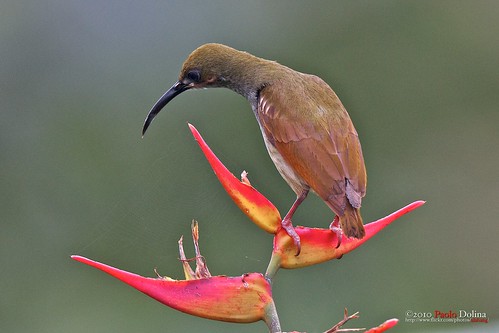
Naked-faced Spiderhunter (Arachnothera clarae) by alabang, on Flickr

Black-crowned Night Heron (Nycticorax nycticorax) by alabang, on Flickr

White-breasted Waterhen (Amaurornis phoenicurus) by alabang, on Flickr

Black-crowned Night Heron (Nycticorax nycticorax) by alabang, on Flickr

Black-headed Munia by alabang, on Flickr

Kida by alabang, on Flickr

Crested Serpent Eagle (Spilornis cheela) by alabang, on Flickr

Coppersmith Barbet, Crimson-breasted Barbet or Coppersmith (Megalaima haemacephala) by alabang, on Flickr

Purple Swamphen (Porphyrio porphyrio) by alabang, on Flickr

The soul that sees beauty may sometimes walk alone. by alabang, on Flickr

Asian Glossy Starling (Aplonis panayensis) by alabang, on Flickr

Lowland White-eye (Zosterops meyeni) by alabang, on Flickr
Photographed in La Mesa Eco Park
The Lowland White-eye (Zosterops meyeni) is a species of bird in the Zosteropidae family.
It is endemic to the Philippines.
Its natural habitat is subtropical or tropical moist lowland forests.
Source: Lowland White-eye - Wikipedia, the free encyclopedia
-
01-02-2011, 08:28 PM #313Elite Member

- Join Date
- Aug 2004
- Gender

- Posts
- 1,253
great photos boss Paolo
-
01-02-2011, 08:30 PM #314
Wow! These are amazing shots.
iSTORYA.NET Forum Rules
Do not argue with the enforcement of these Rules and Regulations. If you are requested to comply, comply. Persistent violations will result in a ban.
-
01-03-2011, 05:52 AM #315
Thank you Recon and psyche

Black-crowned Night Heron (Nycticorax nycticorax) by alabang, on Flickr

Untitled by alabang, on Flickr

Coppersmith Barbet (Megalaima haemacephala) by alabang, on Flickr

White-breasted Waterhen (Amaurornis phoenicurus) by alabang, on Flickr

Untitled by alabang, on Flickr

Collared Kingfisher (Todiramphus chloris) by alabang, on Flickr
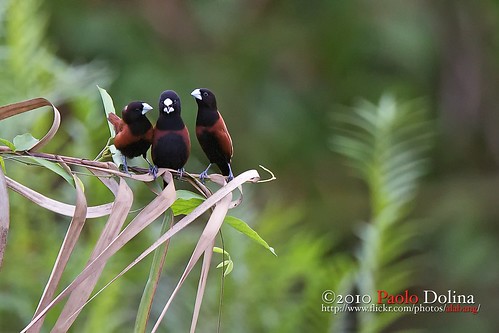
Black-headed Munia (Lonchura atricapilla) by alabang, on Flickr

Philippine Serpent Eagle, Spilornis holospilus by alabang, on Flickr

Brahminy Kite (Haliastur indus) by alabang, on Flickr

Common Hill Myna (Gracula religiosa) by alabang, on Flickr

Untitled by alabang, on Flickr

Yellow-vented Bulbul, Pycnonotus goiavier by alabang, on Flickr

To carry a grudge is like being stung to death by one bee. by alabang, on Flickr
-
01-03-2011, 07:40 AM #316
awesome shots! nindota oi, love the 1st and the last photos.
-
01-03-2011, 08:56 AM #317Junior Member

- Join Date
- Mar 2010
- Gender

- Posts
- 462
-
01-04-2011, 02:00 AM #318
thanks hat trick and ceb. i am flattered by the comparison but romy's been doing this for nearly a decade already. I've been shooting for 2 years.


Bird on Seat by alabang, on Flickr

Untitled by alabang, on Flickr

Untitled by alabang, on Flickr

Untitled by alabang, on Flickr

Untitled by alabang, on Flickr

Untitled by alabang, on Flickr

White-breasted Woodswallow (Artamus leucorynchus) by alabang, on Flickr

Untitled by alabang, on Flickr

Pacific Swallow or Hill Swallow by alabang, on Flickr

Collared Kingfisher (Todiramphus chloris) by alabang, on Flickr

Untitled by alabang, on Flickr

Untitled by alabang, on Flickr
-
01-05-2011, 03:58 AM #319

Philippine Serpent Eagle (Spilornis holospilus) by alabang, on Flickr

Lowland White-eye (Zosterops meyeni) by alabang, on Flickr

Spotted Dove (Streptopelia chinensis) by alabang, on Flickr

Naked-faced Spiderhunter (Arachnothera clarae) by alabang, on Flickr

Great Egret (Ardea alba) by alabang, on Flickr

Purple Heron (Ardea purpurea) by alabang, on Flickr

Wandering Whistling Duck (Dendrocygna arcuata) by alabang, on Flickr

Lesser Coucal (Centropus bengalensis) by alabang, on Flickr

Great Egret (Ardea alba) by alabang, on Flickr

Untitled by alabang, on Flickr

Yellow-wattled Bulbul (Pycnonotus urostictus) by alabang, on Flickr

Immature Red-keeled Flowerpecker or Red-striped Flowerpecker (Dicaeum australe) by alabang, on Flickr

Female Philippine Trogon (Harpactes ardens) by alabang, on Flickr

Blue-headed Racket-tail, Prioniturus discurus by alabang, on Flickr
-
01-23-2011, 02:29 AM #320
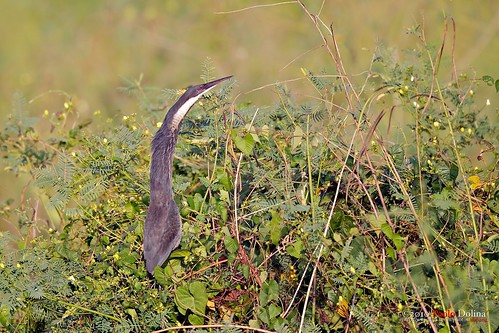
Black Bittern (Ixobrychus flavicollis) by alabang, on Flickr
The Black Bittern, Ixobrychus flavicollis, is a bittern of Old World origin, breeding in tropical Asia from Pakistan, India and Sri Lanka east to China, Indonesia and Australia. It is mainly resident, but some northern birds migrate short distances.
This is a fairly large species at 58 cm in length, with a longish neck and long yellow bill. The adult is uniformly black above, with yellow neck sides. It is whitish below, heavily streaked with brown. The juvenile is like the adult, but dark brown rather than black.
Their breeding habitat is reedbeds. They nest on platforms of reeds in shrubs, or sometimes in trees. 3-5 eggs are laid. They can be difficult to see, given their skulking lifestyle and reedbed habitat, but tend to fly fairly frequently, when the all black upperparts makes them unmistakable.
Black Bitterns feed on insects, fish and amphibians.
Source: Black Bittern - Wikipedia, the free encyclopedia
Photographed in Candaba, Pampanga
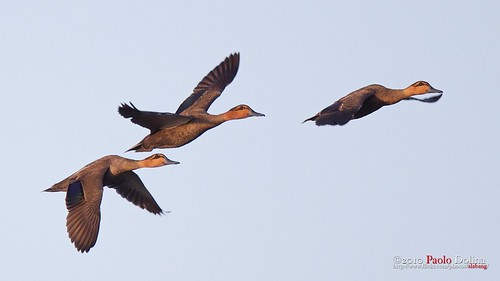
Philippine Duck (Anas luzonica) by alabang, on Flickr
The Philippine Duck (Anas luzonica) is a large dabbling duck of the genus Anas. Fewer than 10,000 remain.
It has a black crown, nape and eye stripe, with a cinnamon head and neck. Rest of body is greyish brown with a bright green speculum. Its legs are greyish brown, and its bill is blue grey.
It eats shrimp, fish, insects, and vegetation, and it frequents all types of wetlands.
Photographed in Candaba, Pampanga, Philippines
Source: Philippine Duck - Wikipedia, the free encyclopedia
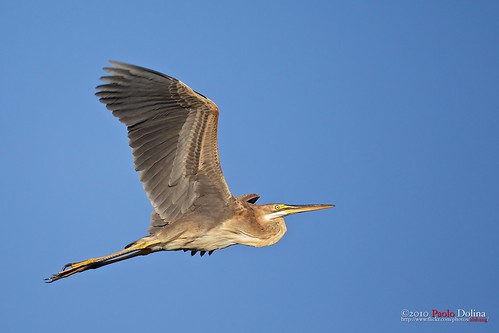
Purple Heron (Ardea purpurea) by alabang, on Flickr
The Purple Heron (Ardea purpurea) is a wading bird in the heron family Ardeidae, breeding in Africa, central and southern Europe, and southern and eastern Asia. The European populations are migratory, wintering in tropical Africa; the more northerly Asian populations also migrate further south within Asia. It is a rare but regular wanderer north of its breeding range.
Photographed in Candaba, Pampanga
Read more: Purple Heron - Wikipedia, the free encyclopedia
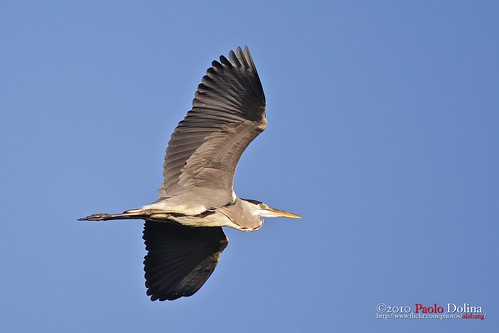
Grey Heron (Ardea cinerea) by alabang, on Flickr
The Grey Heron (Ardea cinerea), is a wading bird of the heron family Ardeidae, native throughout temperate Europe and Asia and also parts of Africa. It is resident in the milder south and west, but many birds retreat in winter from the ice in colder regions. It has become common in summer even inside the Arctic circle along the Norwegian coast.
Photographed in Candaba, Pampanga, Philippines
Source: http://en.wikipedia.org/wiki/Grey_Heron
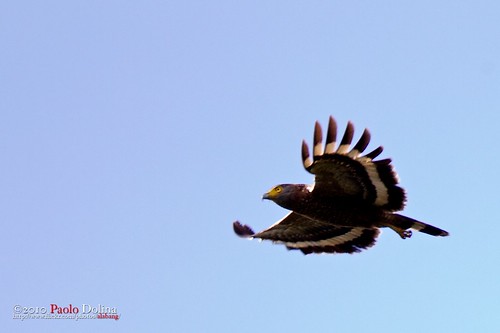
Philippine Serpent Eagle (Spilornis holospilus) by alabang, on Flickr
The Philippine Serpent Eagle, Spilornis holospilus, is an eagle found in the major islands of the Philippines. It is sometimes treated as a race of the Crested Serpent Eagle (Spilornis cheela). This species is usually found in forest clearings, open woodlands, and sometimes in cultivated lands with scattered trees.
Source: Philippine Serpent-Eagle - Wikipedia, the free encyclopedia

Black-headed Munia (Lonchura atricapilla) by alabang, on Flickr
The Black-headed Munia, Lonchura atricapilla (formerly considered as a subspecies of the Tricoloured Munia Lonchura malacca atricapilla) also known as Chestnut Munia, is a small passerine bird. This estrildid finch is a resident breeding bird in Bangladesh, Brunei, Cambodia, China, India, Indonesia, Laos, Malaysia, Burma, Nepal, Philippines, Singapore, Taiwan, Thailand, & Vietnam. Known as maya pula ("red maya", to distinguish it from the predominantly brownish Tree Sparrow which is also called maya) in the Philippines, this bird was the former national bird of the Philippines (the Philippine national bird is now the Philippine eagle)
Source: Black-headed Munia - Wikipedia, the free encyclopedia

Lowland White-eye (Zosterops meyeni) by alabang, on Flickr
Photographed in La Mesa Eco Park
The Lowland White-eye (Zosterops meyeni) is a species of bird in the Zosteropidae family.
It is endemic to the Philippines.
Its natural habitat is subtropical or tropical moist lowland forests.
Source: Lowland White-eye - Wikipedia, the free encyclopedia

Spotted Dove (Streptopelia chinensis) by alabang, on Flickr
Photographed this free bird at Visayas State University, Philippines
The Spotted Dove (Streptopelia chinensis), also known as the Spotted Turtle Dove, is a pigeon which is a resident breeding bird in tropical southern Asia from Pakistan, India and Sri Lanka east to south China and Southeast Asia. It is also known as the Chinese Dove, Mountain Dove, or Lace-necked Dove.
It is a common and widespread species in open woodland, farmland and habitation over a good deal of its natural range, and this successful bird has also been introduced to the U.S. to Hawaii and Southern California. Other countries it has been introduced to include Singapore, the Philippines, northern Indonesia, Australia and New Zealand. In Australia, it was introduced in Melbourne in the 1860s and has since spread, often replacing native doves. In Australia, they are now found in streets, parks, gardens, agricultural areas and tropical scrubs, from Hobart, Tasmania, to Cooktown, Queensland, to Port Lincoln, South Australia. They can also be seen in Perth, Pemberton, Kalgoorlie and Esperance, in Western Australia. The species' range is expanding.
Source: Spotted Dove - Wikipedia, the free encyclopedia
Advertisement
Similar Threads |
|










 Reply With Quote
Reply With Quote


